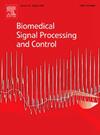Multi-scale feature adaptive aggregation Transformer for super-resolution of lung computed tomography images
IF 4.9
2区 医学
Q1 ENGINEERING, BIOMEDICAL
引用次数: 0
Abstract
High-resolution computed tomography (CT) images help doctors diagnose lung diseases by providing detailed information about underlying pathology. However, most current super-resolution methods still face the following problems: (1) Insufficient performance in restoring fine structure and high-frequency details of local edges, resulting in blurring of the reconstructed CT images. (2) These models are usually complex in structure and have a large number of parameters, which is both inefficient and requires additional computational resources. To address these issues, we propose an efficient Transformer model for super-resolution of lung CT images, named MFAT. Specifically, we propose a multi-scale feature adaptive aggregation strategy (MSAS) that splits features into multiple scales and uses independent computation at each scale to learn the corresponding feature representations while extracting image features in different receptive fields to enhance the fusion between the multi-level information. Additionally, we propose hybrid channel local window attention, which combines local context information and channel mixing to improve image texture expression and enhance detail clarity in reconstructed CT images. Finally, we design parameter-free attention mechanisms that utilize edge operators and multi-scale weighting to enhance highly contributing information and suppress redundant information, while also balancing the number of parameters. Extensive experiments on the COVID-CT dataset demonstrate that MFAT achieves a PSNR of 35.61 dB and 33.34 dB, and an SSIM of 0.9139 and 0.8706 at scale factors of ×3 and ×4, respectively, outperforming state-of-the-art methods. These results show that our method excels at reconstructing high-resolution lung CT images and recovering sharper image details.
肺部计算机断层图像超分辨率的多尺度特征自适应聚合变压器
高分辨率计算机断层扫描(CT)图像通过提供潜在病理的详细信息,帮助医生诊断肺部疾病。然而,目前大多数超分辨率方法仍然面临以下问题:(1)在恢复局部边缘的精细结构和高频细节方面性能不足,导致重建的CT图像模糊。(2)这些模型通常结构复杂,参数多,效率低,需要额外的计算资源。为了解决这些问题,我们提出了一种高效的用于肺部CT图像超分辨率的Transformer模型,称为MFAT。具体而言,我们提出了一种多尺度特征自适应聚合策略(MSAS),该策略将特征划分为多个尺度,并在每个尺度上使用独立的计算来学习相应的特征表示,同时提取不同感受域的图像特征,以增强多层次信息之间的融合。此外,我们提出了混合通道局部窗口关注,将局部上下文信息与通道混合相结合,以改善图像纹理表达,增强重建CT图像的细节清晰度。最后,我们设计了无参数关注机制,利用边缘算子和多尺度加权来增强高贡献信息和抑制冗余信息,同时平衡参数数量。在COVID-CT数据集上进行的大量实验表明,MFAT在尺度因子×3和×4下的PSNR分别为35.61 dB和33.34 dB, SSIM分别为0.9139和0.8706,优于现有方法。结果表明,该方法在重建高分辨率肺部CT图像和恢复更清晰的图像细节方面表现出色。
本文章由计算机程序翻译,如有差异,请以英文原文为准。
求助全文
约1分钟内获得全文
求助全文
来源期刊

Biomedical Signal Processing and Control
工程技术-工程:生物医学
CiteScore
9.80
自引率
13.70%
发文量
822
审稿时长
4 months
期刊介绍:
Biomedical Signal Processing and Control aims to provide a cross-disciplinary international forum for the interchange of information on research in the measurement and analysis of signals and images in clinical medicine and the biological sciences. Emphasis is placed on contributions dealing with the practical, applications-led research on the use of methods and devices in clinical diagnosis, patient monitoring and management.
Biomedical Signal Processing and Control reflects the main areas in which these methods are being used and developed at the interface of both engineering and clinical science. The scope of the journal is defined to include relevant review papers, technical notes, short communications and letters. Tutorial papers and special issues will also be published.
 求助内容:
求助内容: 应助结果提醒方式:
应助结果提醒方式:


